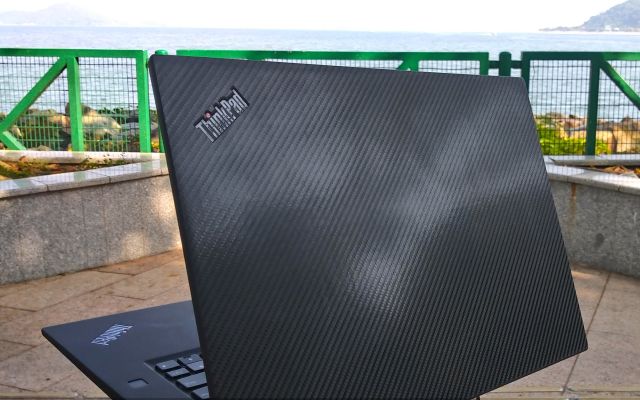Other Articles in this series: So I’ve decided to switch to Linux: Day 1
I wrote a few days ago about how pleasantly surprised I was at the ease of installation and out-of-the-box functionality of Pop!_OS on my X1E Gen 2. I was able to fix one of my main issues involving a never-ending “key ring” popup notification, and other than suspend not working, I had a (mostly) fully functional system. My next few days on Linux were spend customizing things followed by a few hours of attempted troubleshooting.
The great thing about Linux is that you can customize nearly any aspect of the OS, which I did according to this guide. I made sure to install TLP and TLPUI to improve battery life, and once I did that I was very happy with the 8-9 hours or so that I was getting in Pop.
Something I really appreciate switching from Windows is the direct control of hardware possible with Linux. Pop!_OS allows choosing of integrated, discrete, or hybrid graphics modes, and TLP allows quick access to hardware power-saving options with much better granularity than Windows does, including built-in support for setting charging thresholds on ThinkPads. Having the ability to control my fans and power management options completely is something I’ve dreamed of for decades on Windows laptops.
The downside of this is the amount of tweaking required to get many less-mainstream features/apps working, however, and that’s where I found myself struggling. Once I wanted to get a bit more things working beyond my Vivaldi browser setup, such as a functional Suspend (Standby) feature or undervolt, it quickly became apparent I have a lot of learning to do.
The first issue I tried to fix was the fact that my laptop just won’t suspend when I tell it to. The screen turns off and it enters a low-power state very briefly, but it turns right back on a split-second later. Trying to troubleshoot what might be causing the issue led me to many posts with suggested terminal commands, but after a few failed attempts to utilize them I realized I really was in over my head. I knew how to enter the commands, but I had no idea what I was actually doing with each command variable. I decided to give up on fixing Suspend and instead see if I could get some undervolting software working relatively easily.
This resulted in a similarly confusing and frustrating experience for a *nix noob with no real understanding of terminal commands and the way the OS functioned: I tried to install the undervolting software through the terminal only to be found that it couldn’t be installed without Java. I searched for a guide on installing Java and followed that, but I was getting errors with every install about something being locked. I searched for how to solve that problem, but the commands wouldn’t work because I couldn’t find and navigate to the directory my Java had been installed to. Eventually I got Java 13 properly installed and running, but I then got a different error thrown when trying to install the undervolt app because some library hadn’t been registered properly with my Java install.
It’s clear to me now that I need to read up more on Linux commands and navigating the filesystem and generally figuring out to fix things that don’t work out of the box, and Gentoo with a VM has been suggested quite a few times as a good way for me to learn. I do intend to do so, but it was a call back to reality that switching from Windows to Linux wasn’t going to be as noob-friendly as I had hoped. You can do a lot things with Linux through a GUI now (especially with Ubuntu or Pop!_OS) and getting a web browser up and working is very simple, but once you want to do more than that you’re going to need to learn some new skills.
I don’t see Microsoft changing their direction with their software nor Apple changing direction with their hardware, so I still think the way forward is to learn Linux (for myself, at least). Just don’t be silly like me and expect everything to work perfectly seamlessly through the GUI without a fair bit of knowledge of the filesystem and terminal.








Hanman
November 10, 2019 at 6:42 am
You will have to go through a lot of trial and error, and also a lot of different distros. It's definitely time consuming but it's well worth it in my opinion to get the setting just the way you want it.
A few distros I would recommend trying is Ubuntu, Elementary OS and Manjaro Linux. Manjaro Linux is based on Arch Linux, which has a lot of documentation that you can refer to if you are stuck on something.
Douglas Black
November 10, 2019 at 6:56 am
Thank you for the suggestions! I agree that it's going to be very worth the investment of time, and I'm lucky that I have a fair amount of free time these days for that
Sam Medley
November 11, 2019 at 9:33 pm
I usually suggest Pop!_OS or Manjaro, depending on need. The big benefit for Manjaro is its Arch base, which means you get full access to the massive Arch User Repository (AUR), which is the biggest repository for software of any Linux distro (IIRC). You also get access to non-free software; while that's a big no-no for FOSS fanatics, it's almost necessary for a seamless experience on general hardware.
However, Pop!_OS is based on Ubuntu with some nice tweaks, so it's a fair bit more user-friendly than Manjaro.
Messing with Gentoo in a VM will teach you how Linux is built and operates from the ground up, because you have to build Gentoo from literally nothing. While Gentoo is kind of a meme at this point, it's a useful tool for learning the skeleton of the OS (as well as the cellular structure, biochemical bonds, electrical current flows, and all other scientificky terms you can think of).
Good luck, man!
DavidC1
November 15, 2019 at 8:51 am
I see why Microsoft is moving in the direction, and its not just about copying Apple.
If you ever helped someone with computer problems, you will understand this. The best way to reduce problems and headaches for both yourself and the computer newbie is to give them a standard account with administrative access behind a password. It prevents them from doing something they don't know.
So giving people access to lot of features and knobs to adjust means more pitfalls and problems. Ideally they should control themselves and not get in trouble, but they are humans and so are we. I learned to be good at using computers because I went through all the problems. I had viruses that killed all my executable files. I had viruses where I had to alt+f4 battle to kill it.
Most people don't want to learn computers and just get on with their life. They got more pressing matters to worry about. I think part of the problem is the education system, that makes us unwilling to learn. But stress is a factor too.
Suchart Lertwatanakitkul
December 25, 2019 at 10:28 am
I recommend that you would use deepin distro v. 15.11 (Nice Desktop Management, Stable Debian v.9.).
Douglas Black
December 25, 2019 at 7:43 pm
Coincidentally I had been using Manjaro and then liking elementary OS – until elementary suddenly just broke one night and now it freezes every time I boot it. A bit annoying for a distro that demanded money for it…